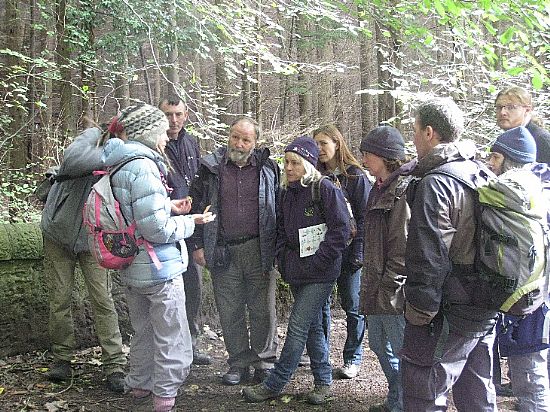Biodiversity training for communities
Carried out by: Central Scotland Forest Trust
Summary Description:
CSFT’s Biodiversity Training for Communities project aims to increase the skills and confidence of community groups involved in managing or running a biodiversity or nature conservation site. It will deliver 15 free training events a year between 2012 and 2014 to community woodland groups, biodiversity interest groups and, where appropriate, be open to the general public aiming to increase involvement in these groups, and also national and local citizen science projects.

The events will cover a range of biodiversity focussed topics, including species and habitat surveying, habitat assessments, management plan production and implementation. They will feature both theory and practical sessions to allow participants to learn about the topics whilst also gaining practical experience. All course resources will be available for participants to take away and use on their own site or area, and it is anticipated that the sessions will evolve over time as participants become more experienced.
Further information on the courses can be found here.
Timescale: 2013-2014
SFT Funds Awarded: £3,000
Project Outcomes:
A programme of 20 formal training events was held throughout 2014 on a variety of topics with a total of 201 people attended the training events. 47 % of these were from established or developing community groups in the Central Scotland area, whilst another 28% were members of the general public interested in getting involved in a group, or other type of conservation volunteering.
In addition seven sites were improved during the training events, providing participants with practical experience of woodland management, peatland management, pond creation and invasive species control. Initial feedback suggests that the 2014 training programme will contribute to the improved management or start of management on approximately 6 sites in Central Scotland. Verbal feedback during some of the species surveying session suggests that several people would put their training into practice by contributing to national citizen science projects, such as the Buglife Ladybird survey, Butterfly Conservations’ Big Butterfly Count and Plantlifes’ Wildflowers Count, and also local recording project via the Clyde & Avon Valley Landscape Partnership, the Inner Forth Landscape Initiative and LBAP work.
It is not possible to say for sure how many of these have followed that through at the moment. A final project evaluation form will be sent to all participants of the 3 year training programme late in 2014 to ascertain how many people are contributing to national or local surveys, and how many have put their skills to use managing their site.
